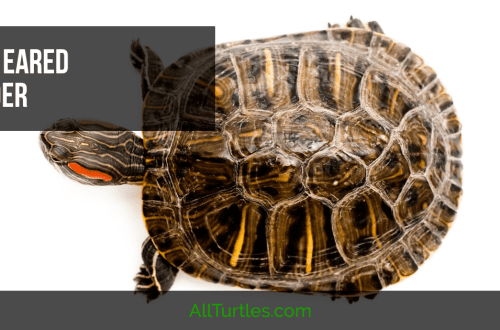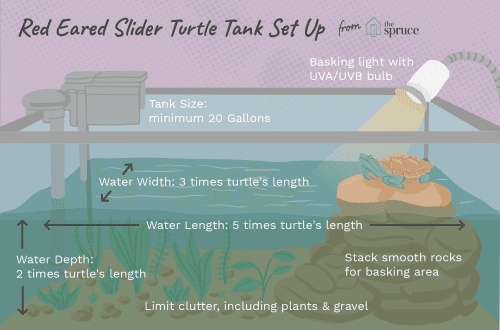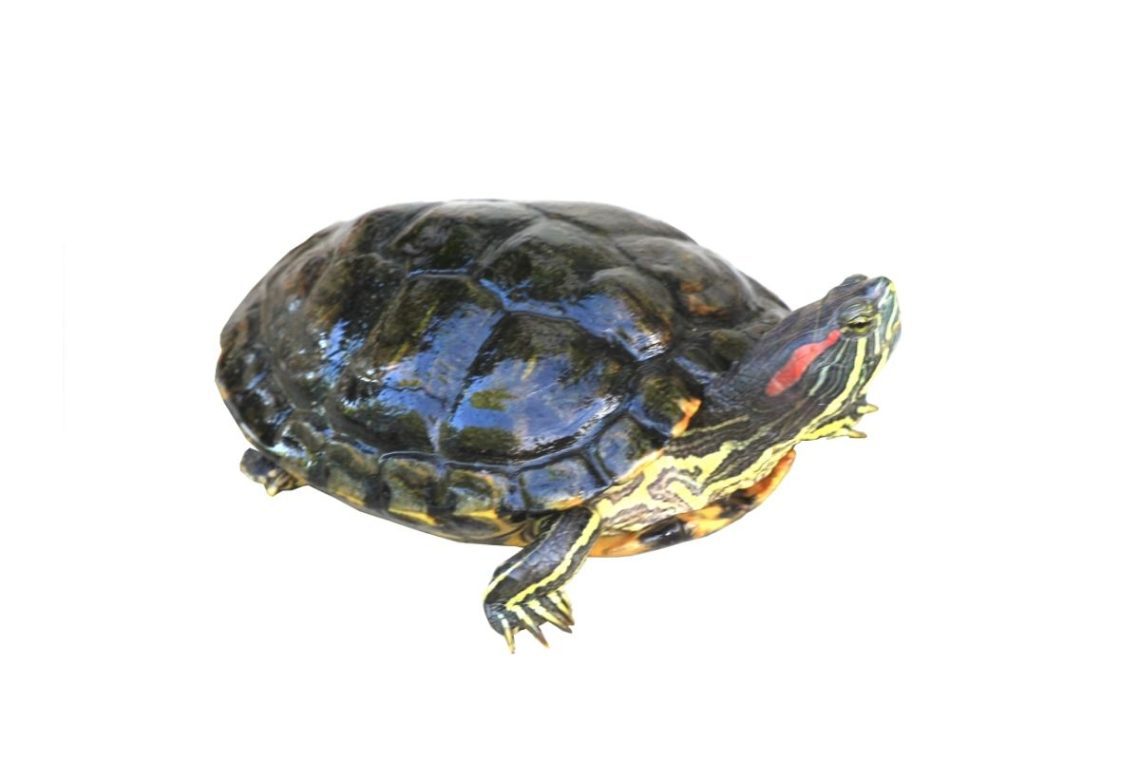
Turtle movement speed on land and in water: how sea, land and red-eared turtles run and swim (average and maximum movement speed)
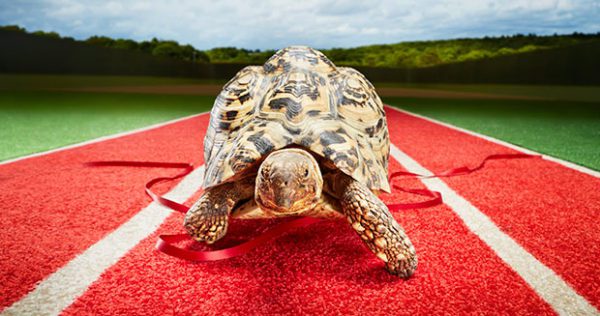
In the folklore of the countries of the former Soviet Union, the image of a turtle is inextricably linked with slowness. On the Fiji Islands, the reptile, on the contrary, is a symbol of speed. Residents respect these animals for their impeccable orientation skills and the swiftness that reptiles show in the water.
Factors that affect the speed of movement of the turtle:
- weight and structure of the shell;
- paw anatomy;
- Body temperature;
- emotional condition;
- surface characteristics;
- age and physical form.
The length of the limbs in representatives of species capable of hiding their paws and head under the shell is shorter, therefore their dynamics is significantly lower than in those species that cannot do this (large-headed turtle, vulture turtle, sea turtles).
The speed of a turtle on land is lower than in water.
Contents
Land speed
Reptiles, whose paws look more like flippers, walk with less comfort, but not always slower. In comfortable circumstances, the reptile prefers to crawl slowly. An increase in pace occurs if the animal senses danger, or is seriously interested in some object at a distance. Run, in the full sense of the word, i.e. at some point not to touch the ground, the reptile can not. But if necessary, they can significantly accelerate.
Soft-bodied turtles run fast. Due to the weak ossification and flat shape of the shell, they are able to rapidly accelerate to high rates. The maximum speed of a turtle on land is 15 km/h.
Video: how fast a water turtle runs on land
Young individuals are faster than adults, their life depends on it in the wild.
Marine rocks on land feel constrained, due to the structure of the paws, more reminiscent of flippers. They are significantly inferior in walking speed to freshwater species, but will seriously compete with land species.
The speed of the land tortoise is often slower than that of freshwater species. Plant food does not need to be caught up, so evolution has chosen the shell as a priority means of protection. In case of danger, it is enough for them to hide their head and paws.
The maximum speed of a land tortoise on average does not exceed 0,7 km / h. The officially recorded record was set by an individual of the leopard breed and is equal to 0,9 km / h.
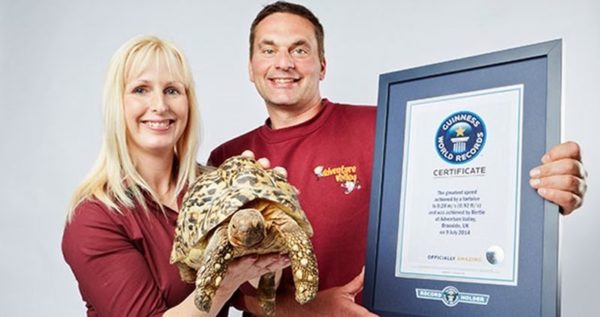
The Seychelles giant tortoise is recognized as the slowest among land tortoises. In a minute, she is able to overcome no more than 6,17 meters, since her pace does not exceed 0,37 km / h.
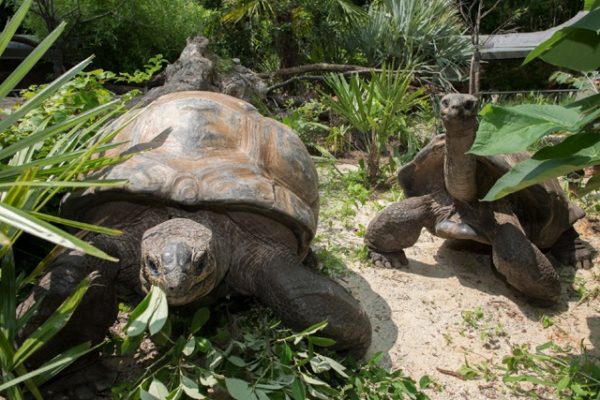
Gopher and star turtles run a little faster, about 0,13 m / s. In the same time they can cover 7,8 meters.
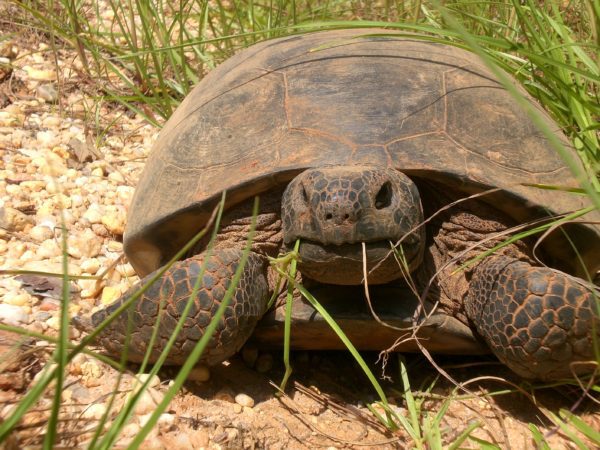
The average speed of a land tortoise is 0,51 km/h.
Video: how fast a land tortoise moves
The owners of the Central Asian land animals note that the pets are active and active. The Central Asian land tortoise can walk 468 meters in an hour. Its speed does not exceed 12 cm/s. Unfavorable soil is not a problem for the reptile. Steep slopes and loose materials underfoot cannot prevent her from moving forward.
Movement speed in water
Land species can survive in the water for some time, but many individuals cannot swim. Prolonged stay outside the native element is dangerous for animals. The non-webbed paws and the elongated bumpy carapace design are not designed for racing in water.
Freshwater turtles have membranes between the fingers, the shell is low and smooth. This allows them to develop an impressive pace. Dynamics contributes to the successful hunting of fish and aquatic animals.
Large leatherback turtles swim at 14 times the speed of the Greenland shark and roughly equal to that of the whale.

The speed of sea turtles in the water is high, as the streamlined, oval shell and flipper-shaped forelimbs are very helpful at depth. On average, they are superior in this freshwater species.
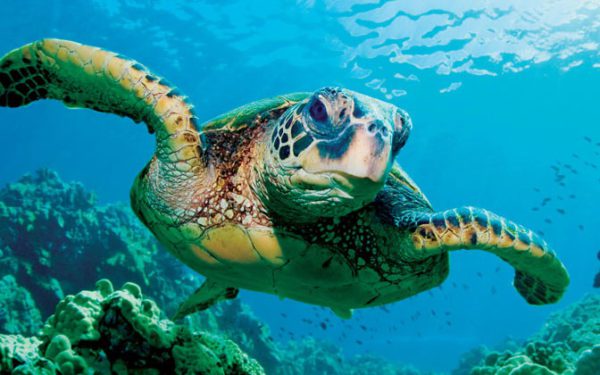
Swimming speed examples for marine rocks:
- sea turtle – 18 km / h;
- green sea – 32 km / h;
- leatherback turtle – 35 km / h.
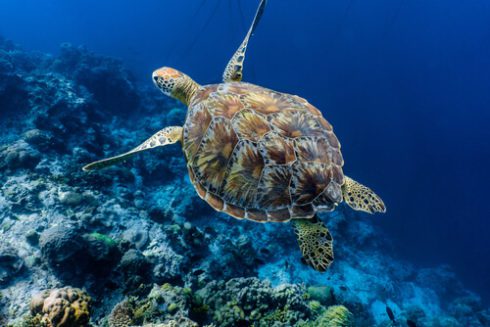
How fast a turtle swims depends not only on its physical data. The possibilities are influenced by the direction of the flow, the density and temperature of the water.
Video: swimming with a turtle
Red-eared turtle speed
In its natural habitat, the diet of the red-eared beauty is 40% protein. Shellfish and small fish are eaten. In a minute, river fish maintain an average speed of 0.3 m, and can reach 2 m / s, which does not prevent the reptile from hunting. Turtles swim at a speed of 5-7 km / h, and the maximum speed of the red-eared turtle can exceed these figures.
On land, the red-eared turtle is slightly inferior to its own records in water bodies. In case of danger, the animal tends to hide in the nearest source of water, where it feels more confident.
The red-eared tortoise is the leader in mobility among sisters in appearance. She can travel several miles a day. In combination with a good reproductive system, this allows the reptile to quickly develop new territories and compete with their inhabitants. The red-eared turtle is included in the official list of “100 most dangerous invasive species” from IUCN.
Video: how the red-eared turtle hunts fish
How fast do land and sea turtles run and swim?
2.7 (54.17%) 24 votes



